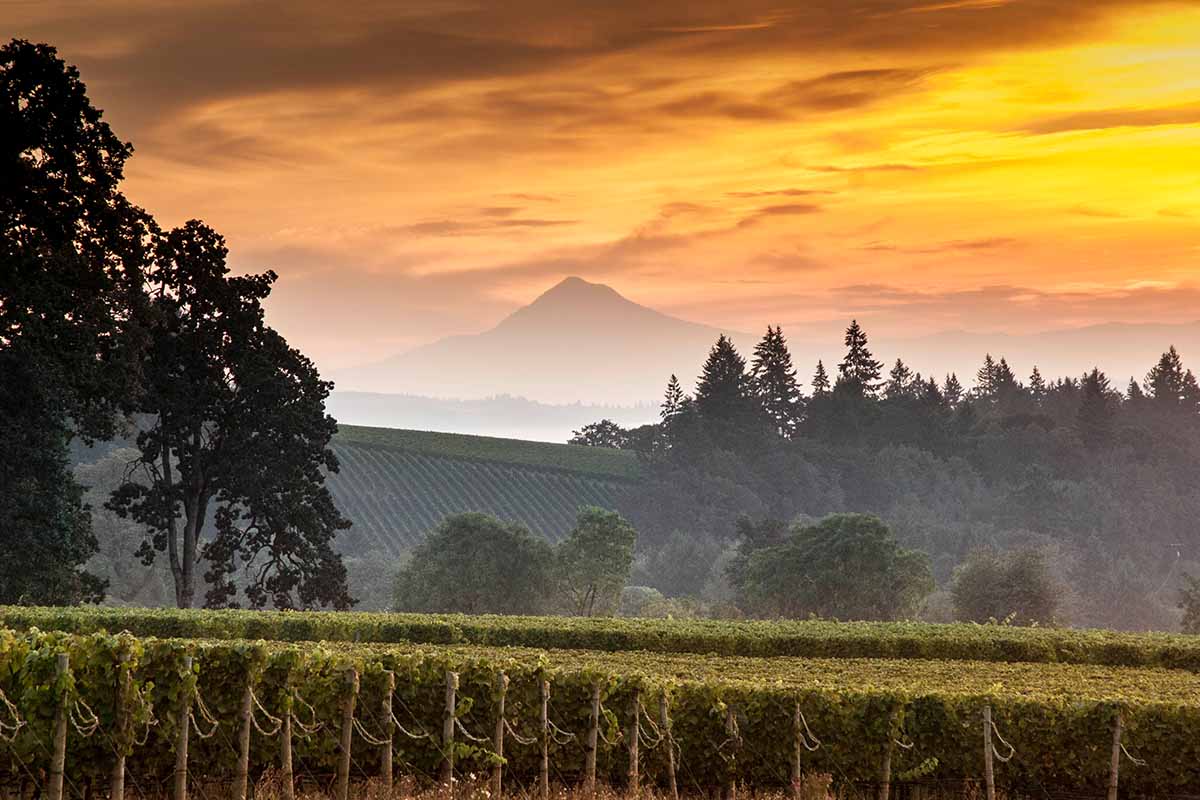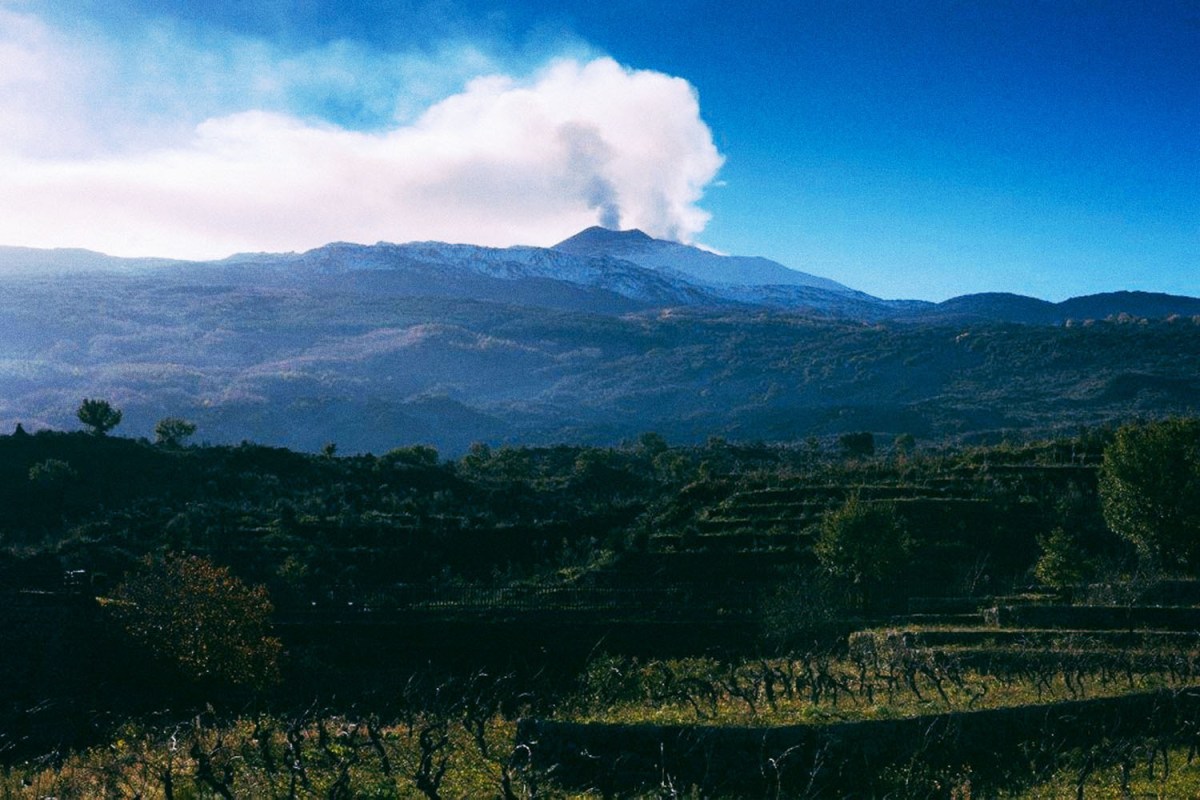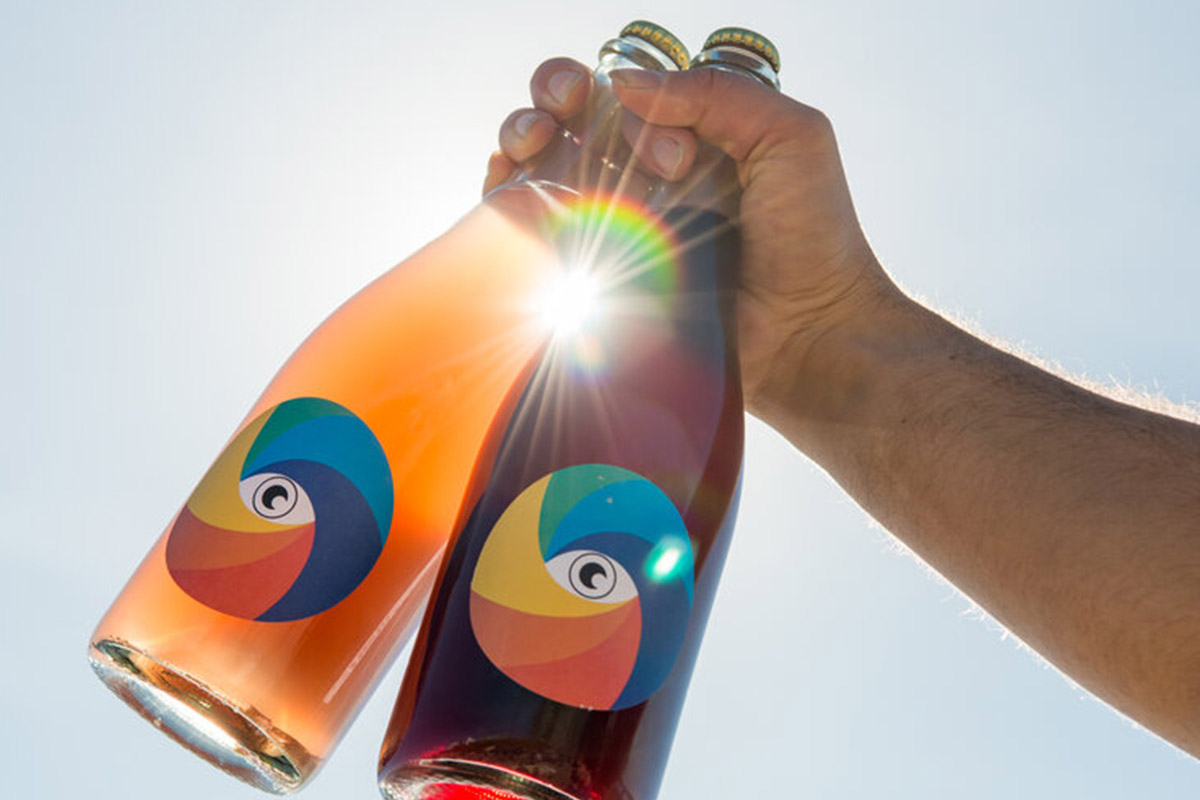When you think of wine-growing regions, your mind likely wanders to gently rolling hills of elegantly coiffed vines, perhaps the towering slopes of Barolo or verdant mountain vineyards in Alsace. But some of the moment’s most interesting wines don’t hail from these idyllic landscapes. Rather, they come from the turbulent, treacherous soils formed from once (or still) active volcanoes.
Volcano-bred bottles are “salty, gritty, and powerful,” according to John Szabo, a master sommelier, wine critic and author of Volcanic Wines. “Overwhelmingly more savory than fruity.”
Volcanic regions aren’t just jet-black basalt landscapes; the category is surprisingly vast and diverse. “Volcanic wines are a large family of wines that come from a range of climates from cold continental to subtropical, from hundreds of different grape varieties and soil types,” says Szabo. “Not to mention the cultural differences in winemaking.”
There are the crisp, briny assyrtiko from the sun-soaked hills of Santorini and juicy, herbal reds grown in the walls of Pompeii, California cabs from where a volcano erupted 11,000 years ago, and sweet Hungarian wines from the Tokaj-Hegyalja region — an area dotted with upwards of 400 volcanoes.
Styles shift from region to region, but volcanic wines are typically concentrated and lifted, with a bright acidity and saline characteristics from the high levels of sodium, potassium and magnesium in the soil.
“It’s difficult to describe the uniqueness of volcanic soil,” says Barbara Tamburini, the head winemaker of Duca di Salaparuta in Sicily, who tends to vines on the slopes of Mount Etna and produces expressive iterations of local varietals, like Nero d’Avola, Grillo and Nerello Mascalese. “I feel as if you need to be there to understand the emotions of existing in that environment: breathing the fresh, dry air and smelling the scents of the volcanic earth.”

In Oregon, the ancient Cascades volcano range “expresses spice and fine-grained tannins in our Pinot Noirs and a depth of flavor and complexity in our Chardonnays,” describes Melissa Burr, vice president of winemaking at Stoller Wine Group. Winemaker Chad Hinds sees the range as offering an almost mythical, Twin Peaks-esque presence.
While treacherous, the terrain often works in a winemaker’s favor. The sandy volcanic soil of Mount Etna, Santorini and the Canary Islands once protected wine from the phylloxera plague — the disease could not survive in clay-free soil, so volcanoes were, ironically, one of the safest places these winemakers could grow. (Gaia’s wines on Santorini are almost 500 years old.)
But there are challenges.
“A winemaker must be able to handle all sorts of demanding tasks to valorize the unique terroir — in-depth analyses of the soils and minerality, picking the most appropriate rootstocks and choosing the best clones,” says Tamburini.
There’s also the glaringly obvious issue: If a volcano erupts, generations of vineyards and decades of work would be under a blanket of hot magma. But for dedicated winemakers, the risk is worth the reward.
“I find there’s an effortlessness to the grape growing and winemaking with these sites, once you understand them,” says winemaker Ben Haines. “The wines can deliver a distinct tension and nervosity, as well as fruit and non-fruit concentration and definition. There’s a real complexity and almost haunting depth, but without heaviness — an inherent freshness to these wines.”
“They can be very exciting,” he continues. “Even with their subtlety and nuance, these wines speak with a compelling sense of place and history.”
A few of our favorite volcanic bottles are below (or pick up a bottle from Haines, Tamburini or Burr).
Girolamo Russo
Led by Giuseppe, the current flag bearer for the Russo family winemaking dynasty, ‘a Rina is a Nerello Mascalese-forward Etna Rosso — a red blend heavily influenced by the nearby seaside and the looming slopes of Mount Etna. It’s silky with scorched earth and tobacco flavors and a zesty acidity. You won’t find flavors like these outside Etna.
Ben Haines
Haines works with two different types of volcanic soil (or “magic dirt” as he quips) for his namesake label: red volcanic soil in Australia’s Yarra Valley and granite-hornfels soil in Tallarook, Victoria. The red soil makes vines vigorous and energetic, while in Tallarook the topsoil is thin and the granite and hornfels soil is exposed. It’s a struggle for vines to grow here, though when they do produce, the small bunches are enormously concentrated and packed with flavor.
“The depth of the wine, seductive feel of the aromas and texture is a little hard to put into words,” he says. Keep an eye out for his soon-to-release “Love in a Mist” Chardonnay, one of Haines’s personal favorites.
Mac Forbes
Winemaker Mac Forbes calls the Yarra Valley — a picturesque region seemingly snatched off a computer screensaver — home, dedicating himself to the quirks and nuances of the valley’s rolling hills. His Hoddles Creek vineyard sits on rich red volcanic soil; expect the Chardonnay here to be crisp, complex and pure.
Good Intentions Wine Co.
Andrew Burchell grows cheeky, energetic wines on one of Australia’s youngest volcanoes, like the Ooh La La Noir. Not your traditional Pinot Noir, those volcanic limestone soils make for bright, perfumed and subtly salty Pinot — slightly spritzed with a savory-steely finish.
Viñátigo
In the Canary Islands, winemaking looks a little different. Vines here sprout out of round craters in the black volcanic ash that covers the island. Viñátigo’s wines are a great entry-level intro to this quirky island wine region. They’re racy, bright, mineral-driven and playful.
Brooks Winery
Over in Oregon, a long-dormant volcano gives Brooks Estates’ Rieslings a tiny hint of sea salt. Contoured and balanced, with notes of tropical guava and lily to balance out the gripping acidity.
Methode Sauvage Iraui
Over in Etna (California, not Sicily), winemaker Chad Hinds makes wine that offers a kaleidoscope of flavors high in the California Alps (or the Shasta-Cascade mountain range, a mythical chain of ancient volcanoes that sweep from Canada downwards). Expressive, emotive alpine wines best sipped al fresco.
Every Thursday, our resident experts see to it that you’re up to date on the latest from the world of drinks. Trend reports, bottle reviews, cocktail recipes and more. Sign up for THE SPILL now.






















